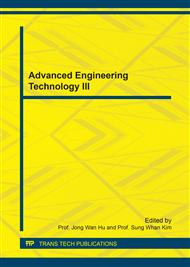p.169
p.175
p.181
p.188
p.192
p.200
p.206
p.212
p.217
Design and Experimental Study of the Lifting Film Shovel for Residual Plastic Film of Bed Planting
Abstract:
According to the working principle of the lifting film shovel for the residual plastic film of bed planting, the structure of the lifting film shovel was designed. Based on the soil dynamics model, the finite element analysis of the static strength of the lifting film shovel was carried out by using ANSYS software. The results show that the stress and deformation of the lifting film shovel increase with tilt angle, and the maximum stress point is on the edge of the mounting holes. When the tilt angle is 46°, the maximum stress is 82.4 Mpa, and the maximum deformation is 0.901 mm. The effects on the hilling height of the travelling speed of the equipment, the tilt angle of the lifting film shovel and the number of the bars were researched by the orthogonal regression experiment of three factors and five levels. The results of the experiment indicate that the effect of tilt angle on the hilling height is larger than that of the traveling speed of the equipment and the number of the bars, and the structure parameters and operating parameters were optimized by the experiment, thus, the optimal tilt angle of the lifting film shovel is 260 and the optimal number of the bars is 2.
Info:
Periodical:
Pages:
192-199
Citation:
Online since:
June 2017
Authors:
Price:
Сopyright:
© 2017 Trans Tech Publications Ltd. All Rights Reserved
Share:
Citation:


